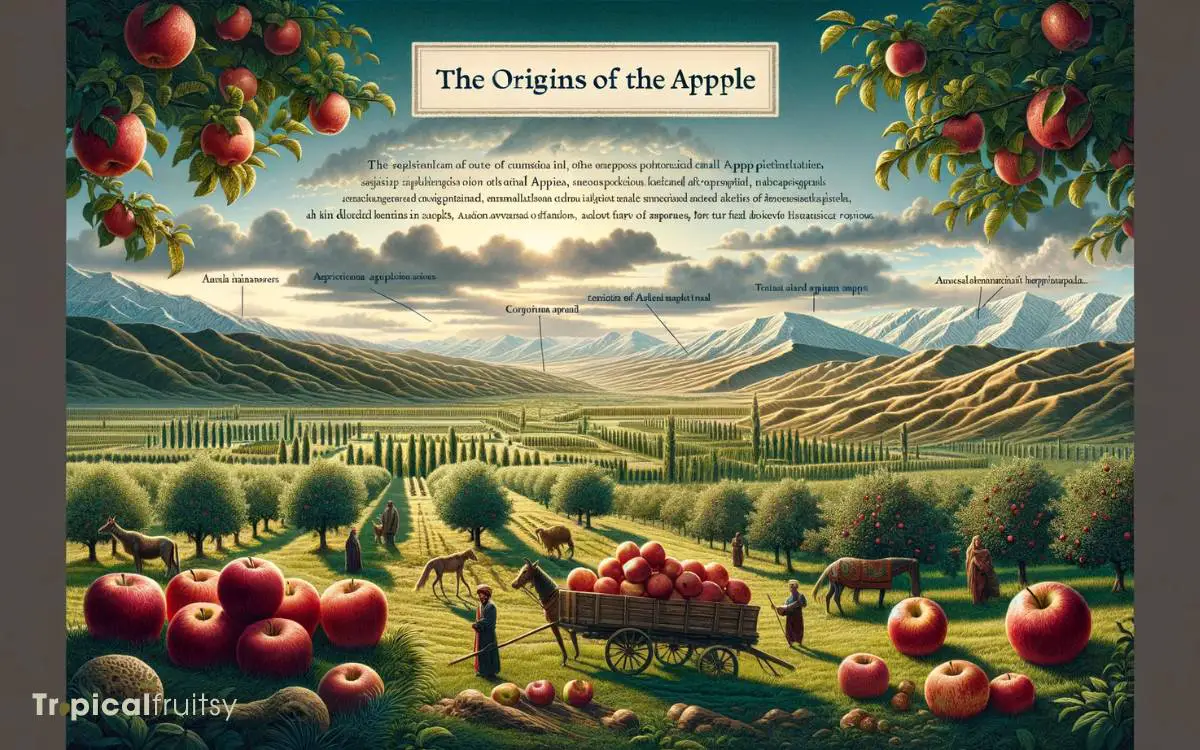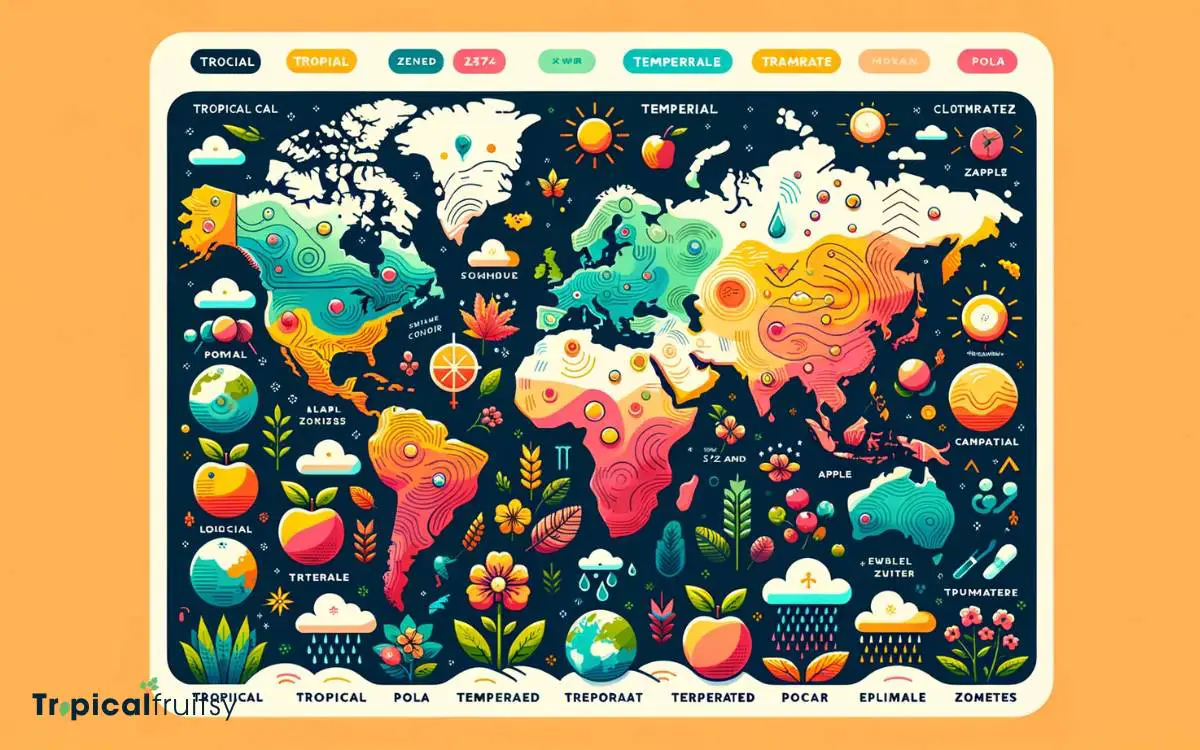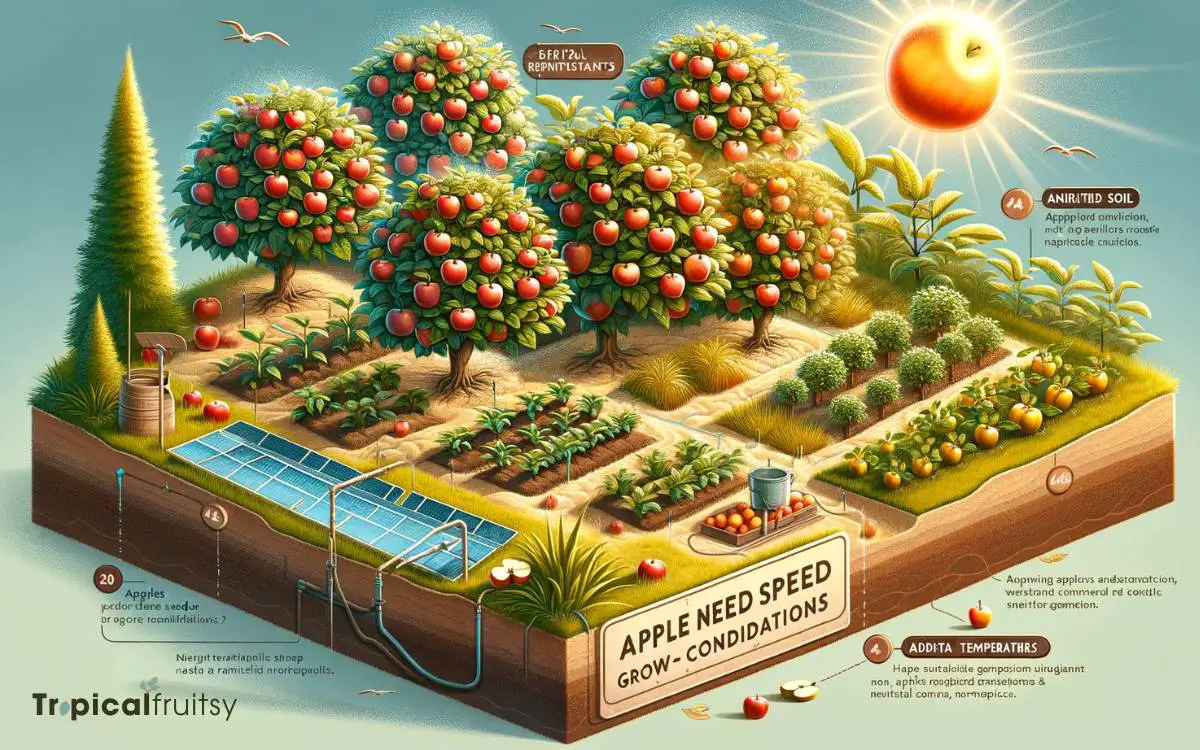Is Apple a Tropical Fruit? No!
No, apples are not considered tropical fruits. They are classified as temperate fruits because they grow best in regions with a moderate climate, characterized by cold winters and mild summers.
Tropical fruits are typically grown in warm climates near the equator, where temperatures are consistently high throughout the year.
Apples, on the other hand, require a colder environment to properly develop, especially a period of winter chill to break dormancy.
Notable examples of tropical fruits include bananas, mangoes, and pineapples. Apples have distinct differences in their growing requirements compared to these fruits.
Apples require a period of cold dormancy, distinguishing them from tropical fruits that thrive in year-round warmth.

Key Takeaway
Origins of the Apple

The apple (Malus domestica), recognized for its temperate origins, is a fruit that historically traces back to the wild species Malus sieversii in Central Asia.
Scientific exploration reveals that its genetic lineage is complex, involving multiple hybridization events with other Malus species across various geographical locales.
This genetic diversification has been both a natural process and a consequence of human cultivation over thousands of years.
Consequently, the apple has become a cosmopolitan fruit, with cultivars adapted to a range of temperate climates.
Molecular markers and archaeological evidence corroborate the apple’s journey from its ancestral genotype to its current domesticated forms, illustrating a clear adaptation to moderate climates rather than tropical ones.
This evolutionary trajectory sets the stage for a deeper appreciation of the apple’s relationship with climate zones, a pivotal factor in its global cultivation.
Understanding Climate Zones

Climate zones are categorized into five major types, each with distinct temperature and precipitation patterns that influence agricultural production and species adaptation.
These classifications, known as tropical, dry, temperate, continental, and polar, are integral to understanding where specific fruits, such as apples, can be optimally cultivated.
The temperate zone, for example, offers a climate that is generally conducive to apple growth, with sufficient chill hours necessary for dormancy and subsequent fruit set.
In contrast, the tropical zone, characterized by consistently high temperatures and moisture, may not provide the seasonal variation apples require.
This delineation of climate zones serves as a fundamental framework for agricultural planning, ensuring that crop selection is aligned with environmental conditions to maximize yield and sustainability.
Apple Growth Requirements

How do specific climatic conditions affect the successful cultivation of apple trees, given their precise requirements for temperature, chill hours, and seasonal changes?
Apples thrive in temperate climates, and their growth cycle is highly dependent on the environment.
Here are four critical climate-related factors that influence apple production:
- Temperature: Optimal growth occurs between 18-24°C (65-75°F). Extreme heat or cold can hinder development or damage the crop.
- Chill Hours: A requisite number of hours below 7.2°C (45°F) during dormancy to break bud and flower properly.
- Seasonal Changes: Well-defined seasons with cold winters and warm summers promote the best fruit set and quality.
- Frost Risk: Late spring frosts can devastate blossoms, thus regions with minimal frost risk after bloom are preferred.
Understanding these parameters is crucial for successful apple cultivation, delineating the boundaries between suitable and unsuitable growing regions.
Comparing Apples to Tropical Fruits

In contrast to apples, tropical fruits typically require warm, humid conditions year-round and do not have a chill hour requirement for successful cultivation.
Their growth is contingent upon a consistent climate that does not accommodate the temperate seasons necessary for apple development.
To elucidate the distinctions, consider the following table comparing select characteristics of apples with those of tropical fruits:
| Characteristic | Apples | Tropical Fruits |
|---|---|---|
| Climate Preference | Temperate | Tropical |
| Chill Hour Requirement | Yes | No |
| Growing Season | Defined by seasons | Year-round |
| Sensitivity to Frost | High | Low to None |
From the table, one observes the fundamental climatological differences. Apples thrive in conditions marked by distinct seasonal changes, whereas tropical fruits prosper in stable, frost-free environments.
This contrast is pivotal in understanding the categorization and cultivation practices of these fruits.
How Are Orchard Fruits Different from Tropical Fruits, Such as Apples?
Orchard fruits, such as apples, are typically grown in temperate climates and have a more crisp and juicy texture. Tropical fruits, on the other hand, like mangoes and pineapples, thrive in warm, tropical climates and have a sweeter, more exotic flavor. This tropical and orchard fruit comparison highlights the diverse range of fruit options available.
The Verdict on Apple’s Classification

Considering the aforementioned evidence, apples are definitively not tropical fruits but rather belong to the temperate fruit category.
This distinction is based on a confluence of agronomical and botanical characteristics:
- Climatic Requirements: Apples require a period of cold dormancy, indicative of temperate regions, unlike tropical fruits that favor constant warm conditions.
- Origin and Cultivation: The apple tree (Malus domestica) originated in Central Asia, with historical cultivation spreading through temperate zones, not tropical ones.
- Harvesting Seasons: Apples are typically harvested in late summer through fall, aligning with temperate climates’ growing seasons.
- Physiological Adaptations: Apple trees exhibit adaptations like deciduousness suited to temperate climates, contrasting with the evergreen nature of many tropical fruit trees.
Conclusion
Apples, unlike tropical fruits which flourish under the kiss of the relentless sun, thrive in temperate zones that welcome the change of seasons.
They require a period of winter chill for successful fruiting, a characteristic at odds with the constant warmth of tropical climates.
Therefore, apples do not belong to the tropical fruit category, but are firmly rooted in the temperate fruit classification, reflecting a clear demarcation in the botanical world.






